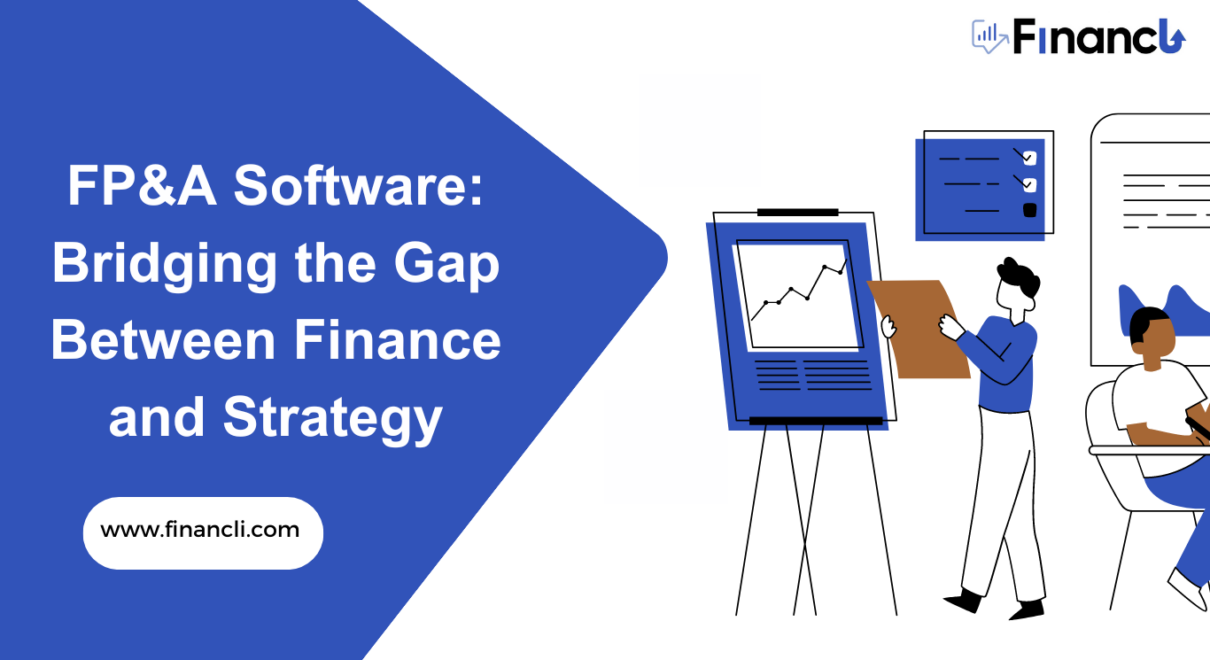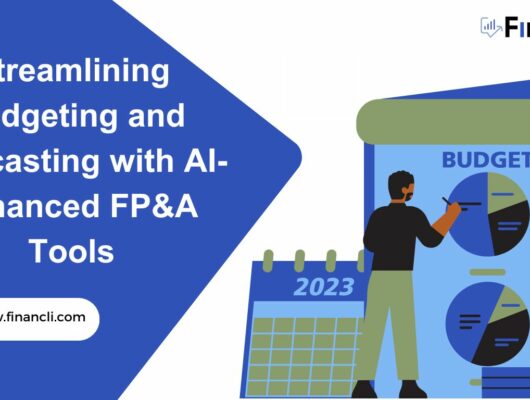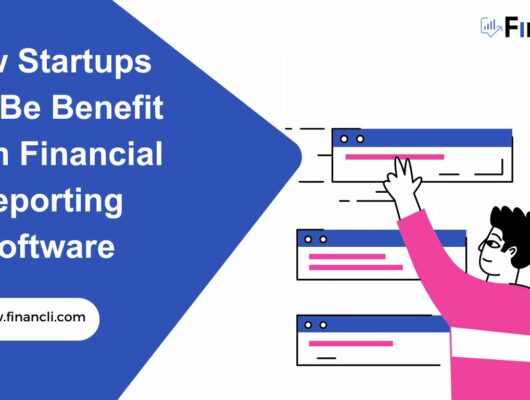FP&A Software: Bridging the Gap Between Finance and Strategy
Introduction
In the fast-paced business landscape, aligning finance and strategy is vital for sustained success. Explore how FP&A software bridges this gap, providing real-time insights and fostering informed decisions essential for navigating modern complexities.
Understanding the Gap

Finance and strategy are two critical components of any organization. Finance focuses on managing the company’s financial resources, analyzing financial data, and ensuring compliance with regulations. On the other hand, the strategy involves setting long-term goals, making informed decisions, and creating a roadmap for achieving those goals.
However, there is often a gap between finance and strategy. Finance teams tend to be focused on historical data and reporting, looking at what has already happened and analyzing the financial performance of the organization. Strategy teams, on the other hand, look forward to focusing on future goals and making decisions that will drive the organization toward those goals.
This gap can cause challenges for organizations. When finance and strategy are not aligned, decision-making becomes disjointed. Strategy teams may create plans and initiatives without fully understanding the financial implications or constraints.
Historical Challenges
Historically, finance and strategy teams grappled with inherent challenges that impeded seamless collaboration. Siloed workflows and communication gaps presented obstacles, hindering the integration of financial insights into strategic planning. The absence of a unified platform often resulted in fragmented data and disparate viewpoints.
Impact on Organizational Strategy
The repercussions of disconnected financial planning reverberate across the organizational strategy. This disjointed approach undermines the ability to anticipate challenges, seize opportunities, and adapt swiftly to market dynamics. The adverse impact is notably reflected in compromised growth prospects and diminished organizational adaptability, ultimately hindering the pursuit of long-term objectives.
Cohesive Decision-Making
Acknowledging the historical challenges, there is a pressing need for a cohesive approach to decision-making. Recognizing the interdependence of finance and strategy, organizations must foster synergy between these departments. Cohesive decision-making entails integrating financial insights seamlessly into the strategic planning process. This integration not only mitigates historical challenges but also propels strategic initiatives with a unified and informed vision. It involves breaking down silos, encouraging cross-functional collaboration, and establishing a shared understanding of organizational goals, ensuring that decisions align with overarching strategic objectives.
Strategic Alignment
1. Linking Goals and Objectives
Strategic alignment commences with the intricate task of linking financial goals with strategic objectives. This involves weaving a cohesive narrative where financial aspirations seamlessly dovetail into the broader organizational vision. By aligning these elements, businesses create a unified roadmap that guides every facet of their operations. This linkage ensures that financial decisions are not isolated actions but strategic maneuvers contributing to the realization of overarching organizational goals.
2. KPIs Tracking
A pivotal aspect of strategic alignment is the vigilant monitoring of Key Performance Indicators (KPIs). These measurable metrics serve as navigational tools, steering the organization toward its strategic milestones. Regular tracking provides real-time insights into performance, enabling timely adjustments and interventions. KPIs become the compass by which the organization gauges its progress, ensuring that each financial decision contributes meaningfully to the attainment of strategic objectives.
3. Long-Term Planning
Strategic alignment extends into the realm of long-term planning, and here, Financial Planning and Analysis (FP&A) tools emerge as indispensable allies. Leveraging these tools, organizations gain the capability to chart their course through the ever-evolving business environment. Whether anticipating market shifts or aligning resources with future goals, long-term planning becomes a dynamic process. FP&A tools empower businesses to create robust financial models, allowing for scenario analysis and strategic foresight. This proactive approach to long-term planning ensures that financial decisions are not just responsive but anticipatory, fostering resilience in the face of changing landscapes.
IV. Benefits of FP&A Software Adoption

A. Improved Decision-Making
1. Timely Financial Insights
Embracing FP&A software translates to gaining timely access to real-time insights embedded in financial statements. This immediacy empowers decision-makers with a comprehensive understanding of the current financial landscape. Armed with up-to-the-minute data, organizations can make informed decisions, react promptly to market shifts, and optimize their financial strategies for maximum impact.
2. Data-Driven Decisions:
FP&A software acts as the single source of truth, consolidating accurate financial data. This consolidation eliminates discrepancies and ensures that decision-makers have a reliable foundation for formulating strategies. By leveraging this consolidated data, organizations can proactively manage risks through scenario analysis. This data-driven approach enhances the precision and effectiveness of decision-making processes.
B. Increased Efficiency
1. Automated Data Collection
The adoption of FP&A software heralds an era of automated data collection and analysis. This efficiency boost significantly reduces the manual workload on finance and strategy teams. Automation not only accelerates data processing but also minimizes errors, fostering a more accurate representation of the financial landscape. The result is a streamlined and efficient financial process that frees up valuable time for strategic thinking.
2. Streamlined Reporting
FP&A software streamlines reporting processes, transforming them into agile and responsive mechanisms. This streamlining not only saves time but also ensures that reports are generated promptly, facilitating quicker decision-making. With an accelerated reporting cycle, finance and strategy teams can adapt swiftly to changing circumstances, maintaining a proactive stance in strategic planning.
C. Enhanced Collaboration
1. Breaking Down Silos
FP&A software serves as a catalyst for breaking down silos within an organization. By providing a centralized platform for financial data, it encourages cross-functional team engagement. Departments can collaboratively contribute to the decision-making process, fostering a holistic approach to strategic planning. This breakdown of silos ensures that insights from various corners of the organization are considered, enriching the decision-making landscape.
2. Improved Communication:
The software facilitates improved communication and coordination among teams. By offering a shared platform for financial insights, it fosters a collaborative environment conducive to strategic planning. Enhanced communication ensures that every stakeholder is on the same page, working towards common goals. This collaborative approach not only improves the quality of decisions but also strengthens the overall fabric of organizational strategy.
Frequently Asked Questions:
– What is Strategic Finance?
Exploring the link between financial planning and strategic initiatives for long-term success.
– What is the Link Between Strategy and Finance?
Unraveling the interdependence of strategy and finance in driving informed decisions and business success.
– What is the Role of FP&A in Strategy?
Understanding how Financial Planning & Analysis plays a pivotal role in connected planning, providing valuable and actionable insights.
Conclusion
In conclusion, harmonizing the finance team with strategic decisions is critical for organizational success. The integration of FP&A software, encompassing financial models and scenario planning, empowers finance professionals and leaders. It facilitates informed financial decisions, optimizes cash flow, and ensures the accuracy of budgets. The collaborative approach to Financial Planning and Analysis, coupled with operational planning and strategic goal alignment, provides valuable insights into financial performance. By embracing advanced tools, finance teams can effectively manage financial forecasts, driving not just efficiency but also the long-term success of the entire company. In the ever-evolving business environment, the strategic use of technology enhances the role of finance in delivering actionable insights, making it an indispensable partner in shaping the future of the business.






